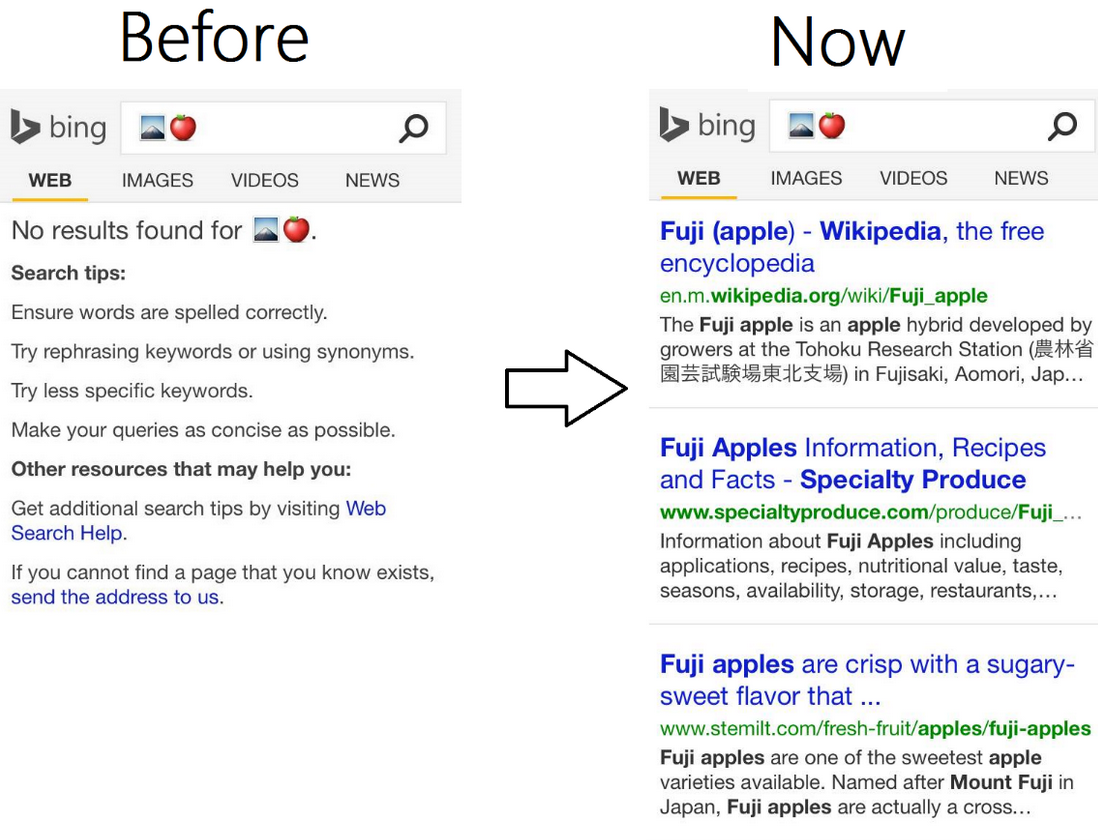Three Questions Bing Should Have Asked When Launching New Emoji Search Feature

Image taken from www.seoexpertpage.com on November 10, 2014
Bing has always worked hard to distinguish itself from Google. It might not own the largest video hosting platform on the Internet or have created a popular social media network, but as of October 27, you are now able to search via emojis on Bing.
The search engine joins Yahoo and Yelp in adding this feature, hoping to interest the texting-centric generations of millennials who have long mastered the art of having a full conversation in tiny generic pictures. Google has not included this component, though there are suggested search results that include emojis.
Picture this
The search function works with single images, as well as multiple ones to create specific organic listings.
Should you want a flight to England, you only need to type in a tiny Union Jack flag followed by a picture of an airplane to get the most-up-to-date listings and bookings. If you’re trying to find a great pizza place, you only need to enter the pizza emoji to read reviews on the best slice near you. We unfortunately can’t tell you what would happen if you put in a smiling piece of human waste as we didn’t want to know the results.
While this is an interesting addition to the search engine’s aspects and definitely a great source of entertainment, this announcement raises a few eyebrows.
It also sparked a few questions that can not only pertain to Bing’s newest aspect, but to all facets of content creation.
Is it necessary?
While some might not feel there is a pressing need to be able to search for a dog by inputting a cartoon of a puppy, others may disagree. But when you’re creating content for your brand, it is important to ask before writing a blog, recording a video or creating an image if the content is needed by your audience as a whole.
Creating content for content’s sake ignores your audience’s needs. It does nothing but build links that will not retain readers and discourage loyalty to your brand.
Before implementing any form of content, make sure there is a meaning and purpose behind each piece you design and each decision you make. Your audience is smart and will bypass any filler pieces in favor of something of quality.
Is it helpful?
 Searching by emojis could be useful in certain circumstances, though it might take the same amount of time to type the word “book” as it does to find and insert a drawing of one. Your content should benefit your readers in some way, be it by educating them on a concept that relates to your brand or detailing a product that you provide.
Searching by emojis could be useful in certain circumstances, though it might take the same amount of time to type the word “book” as it does to find and insert a drawing of one. Your content should benefit your readers in some way, be it by educating them on a concept that relates to your brand or detailing a product that you provide.
No matter the topic, your content should provide pertinent information to your consumers. This will not only show that your brand cares about the readers, it will also demonstrate that you are a company that is knowledgeable in the field you specialize in.
Is it entertaining?
Bing certainly scored in this category! You can easily spend hours coming up with combinations of emojis and laughing at the returned search results.
Any content that you create should not only be necessary and informative, but also hook your reader’s attention. Helping your clients learn about a particular topic is important, but there is no need to bore them along the way.
You can try to package your content in an interesting infographic, add eye-catching images to a landing page or add in colorful imagery into your blogs to help keep your reader’s attention as you educate them.
However, make sure that the presentation method works with your content, not against it.
For example, graphs and charts might help an article look professional, but they are pretty useless without data to input.
The Final Verdict
Bing might not have earned a “yes” on all three questions, but you should work hard to ensure that all content you publish does. Creating necessary, informative and entertaining content is a challenge, but mastering this art is what earns respect from customers and creates a brand that is trusted in an online space.



